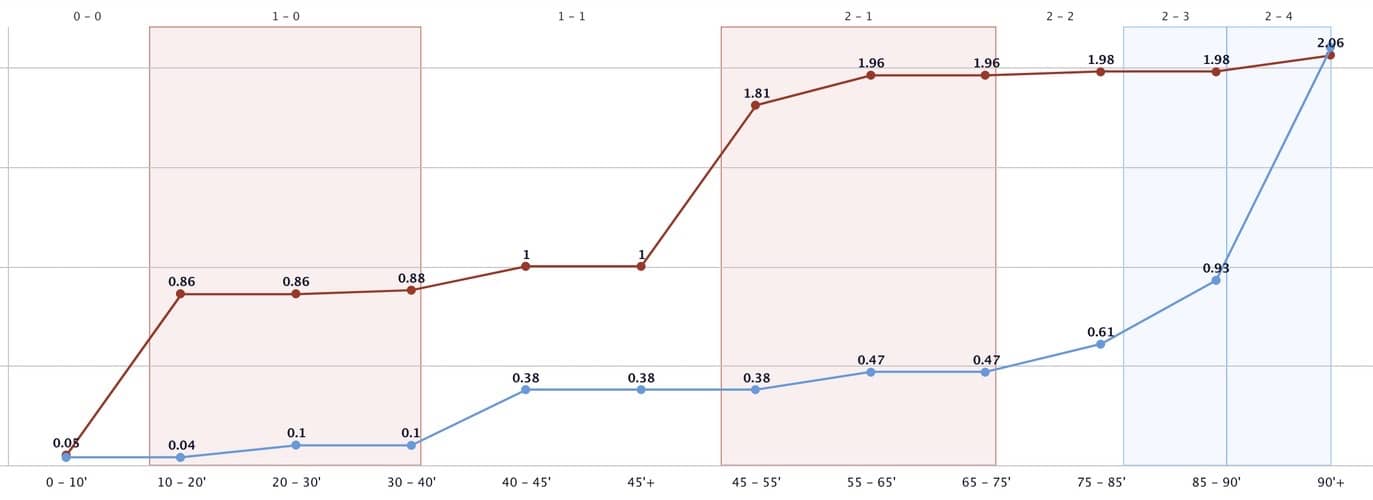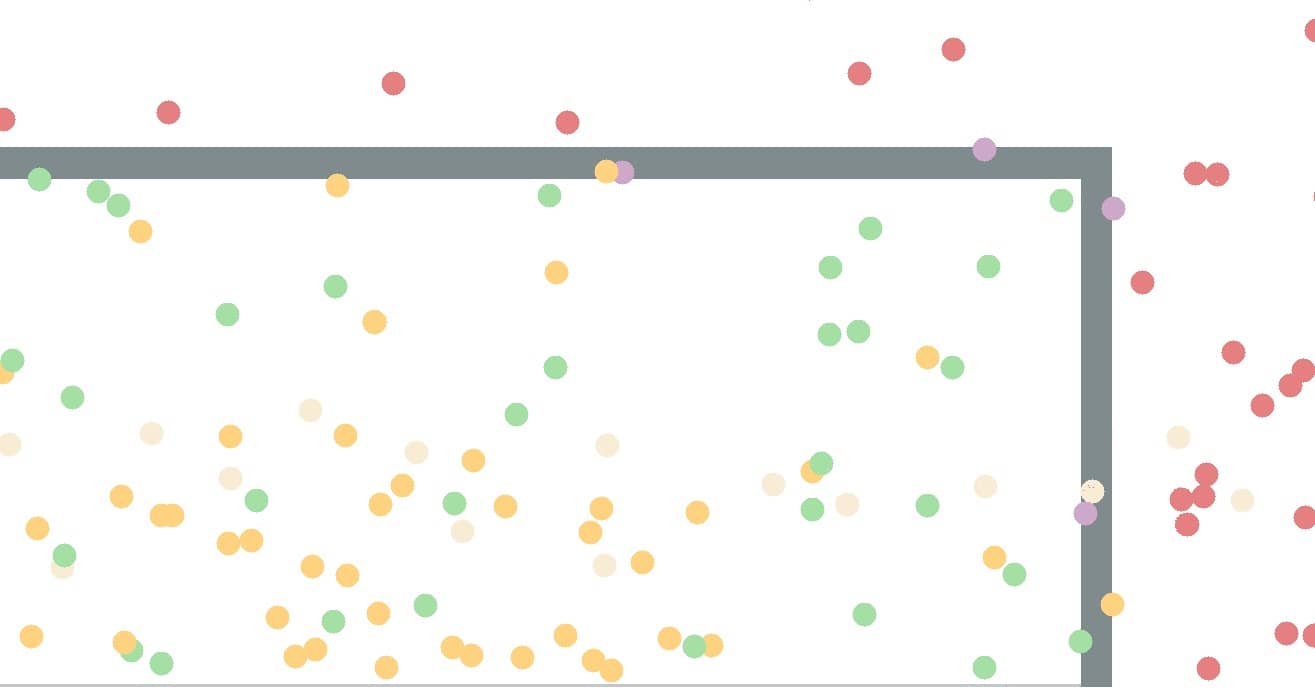As we all know, Messi is a vital part of the Argentine national team. His talent allows him to unlock complicated situations and matches. We always ask ourselves "how does he do it?"; consistently making the right decision, choosing the best pass.
Over his last 9 games prior to the World Cup, we analysed Messi's movement and style of play, and this is what we have learned.
A Lazy Maestro
Firstly, we will focus on Messi’s movement. After watching the Argentine Maestro play, it becomes clear that he runs very little. Of all the Argentinian attacking players, Messi is the one who walks the most and runs the least.
Indeed, over the last 8 games*, Messi walks on average 4.6km / match (80% of his playing time). In comparison, his attacking teammates only walk 2.9km / match (40% of their playing time). In regard to high intensity running, the Argentinean attacking players sprint on average 8% of the match while Messi only sprints 4%.
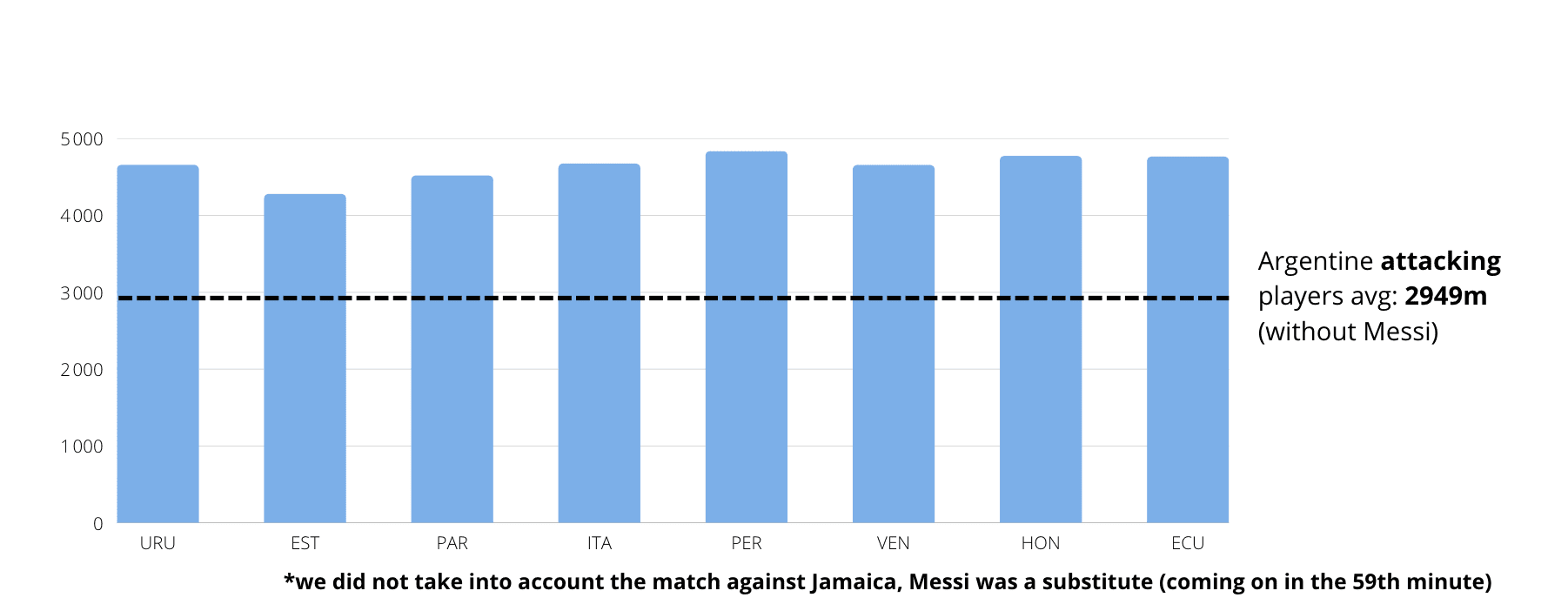

To demonstrate the degree to which Messi is less active compared to his teammates, we have identified a pertinent statistic during Argentina's World Cup qualifying match against Ecuador. During this game, Messi played the entire match (97 mins) but completed 4 times less sprints than Angel Correa who only played 25 minutes. This inactivity is paradoxical given his importance to Argentina’s game.

As you can see, the maestro walks more and sprints less than most of his teammates, but those rare bursts of acceleration are what threatens opposition defences. Let’s see now how he dismantles defences...
A Magnet For Opponents
Defenders are aware of Messi’s imposing threat, and therefore, act accordingly. Many opponents implement "anti-Messi" strategies to limit his impact on the game. As a result, 83% of all passes completed by Messi were made under pressure from an opponent. He is the most pressurised player in the Argentina squad, well ahead of Di Maria, who completes 72% of his passes under pressure.
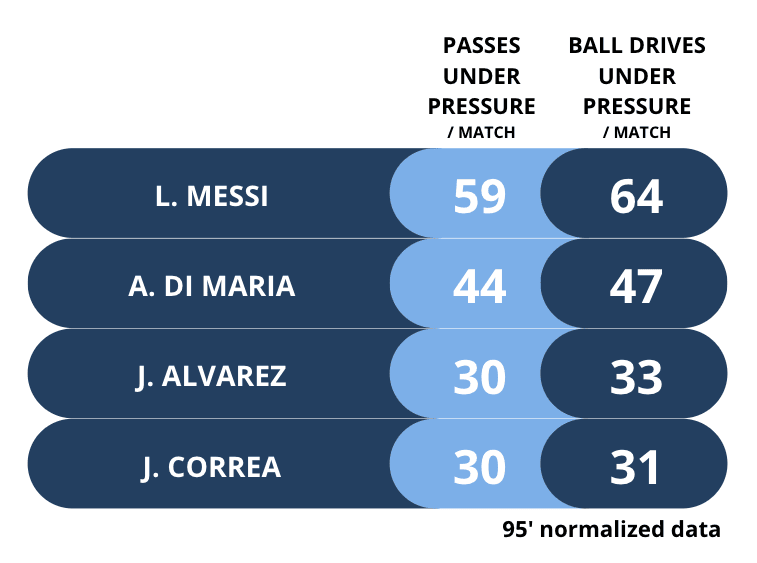
But how does Lionel Messi manage to dictate the game, despite being under constant pressure?
The opponents subject Messi to sustained pressure, which automatically reduces the space and options available to him. Each time he is on the ball, defences often dedicate two, three, or even four players in an effort to stop him. Therefore, this creates more space for his teammates and allows them to enjoy more freedom. For Messi to be effective, he requires constant movement and runs in behind from his teammates.
So, this pressure does not prevent him from driving forward and finding his teammates who are exploiting the space he creates. His talent and natural ability allow him to move forward quickly with key passes and this is what we will analyse next.
Argentina’s Orchestrator
In order to evaluate his contribution to Argentina’s attacking play, in comparison to his teammates, we have chosen to analyse the deep passes completed by the Argentine players using our data collection software. Here are the results:
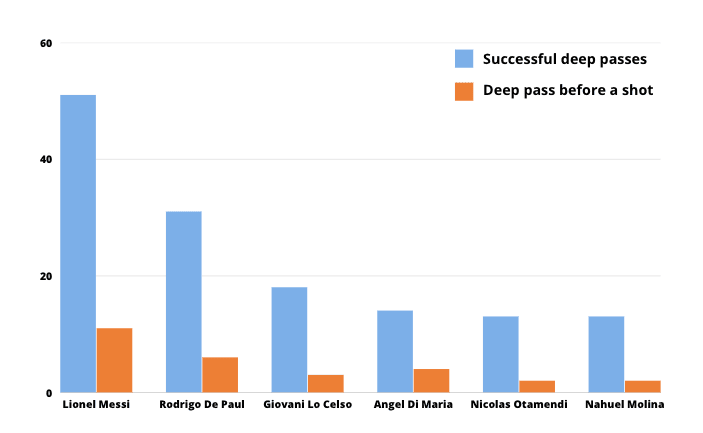
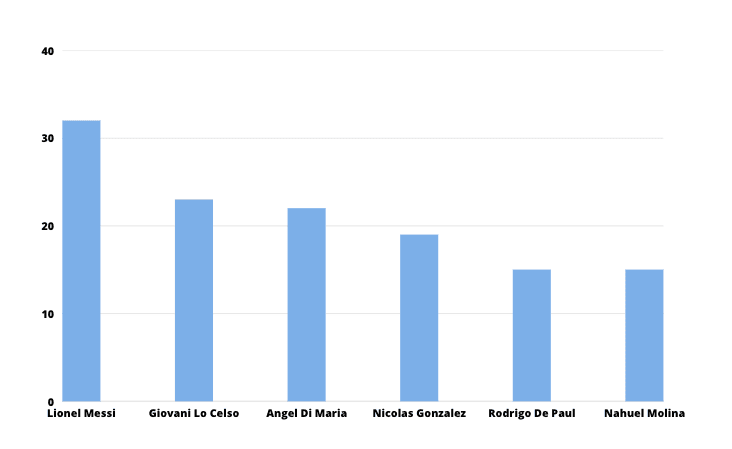
Note that, on average, Messi gains 1.33m from his passes. He is the only Argentine attacking player who gains ground with his passes.
As you can see, despite constant pressure, Messi drives forward and creates twice as many opportunities as his teammates. Messi is the X-factor of Argentina's attack, threatening opposing defences thanks to his deep, surgical passes, piercing defensive lines. He also knows how to speed up the game with his touches of the ball, with around 30% of his ball drives completed in two touches at most.
The Line Breaker
For Messi, it seems that no pass is impossible. His pinpoint passes can break the deadlock by creating clear goal-scoring opportunities. Messi is the Argentinian player who breaks the lines the most with his passes; generally directed to the centre or the left wing. Statistically, even play-makers like Di Maria are far behind. Messi does not need to rely on the long ball. 90% (104/115) of his line breaking passes are short passes.

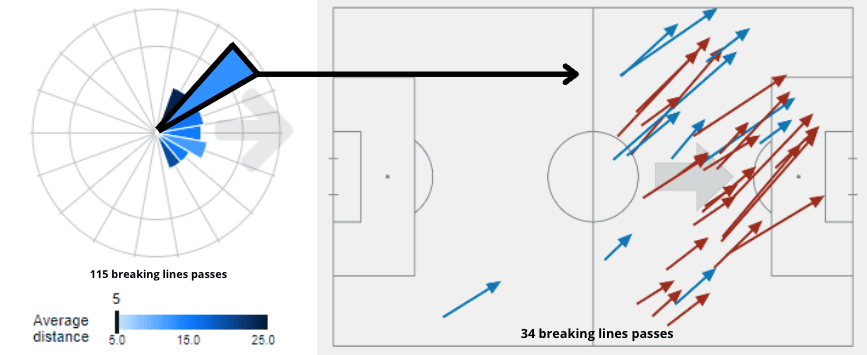
The Argentine maestro has the ability to break down midfield and defensive lines more effectively than anyone else. With a preferential passing pattern, he manages to create danger in the opposing areas.
The Risk Taker
Messi is the primary threat for Argentina. He creates 1.3 goal chances per game with his ball drives. Messi is also the most forward-thinking player in his team. He gains on average, 271m per match from his ball drives and passes. Second, is J. Alvarez who gains on average, only 14 meters per match.
Here you have an example of the expected threat (xT), which is the average danger contribution of a ball drive. As you can see, Lionel Messi is the most dangerous threat in his team but he’s also the most consistent risk taker, as shown by the analysis of expected pass (xP). Expected pass (xP), is measured on a scale of 0 to 1; the lower the number, the more difficult the pass.
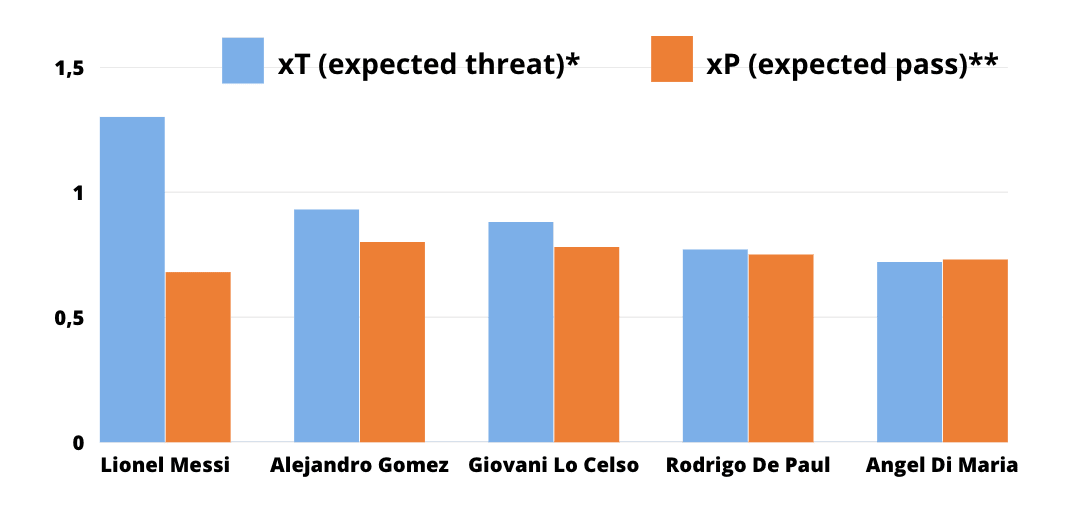
*xT (expected threat): the greater the number, the greater the contribution to the progress of the action **xP (expected pass): on a scale of 0 to 1, the more difficult the passes, the lower the number
Below, Messi chooses to pass to Joaquin Correa with an expected pass (xP) of 0.3, even though he had options at 0.9. The Argentinian maestro regularly chooses the riskiest option. Thanks to his magic touch, it's also the one that breaks the lines and creates the greatest threat to the opponent's defence. Thanks to his creative vision and ability to execute a tricky pass, he eliminates 8 opposition players, almost the entire team.
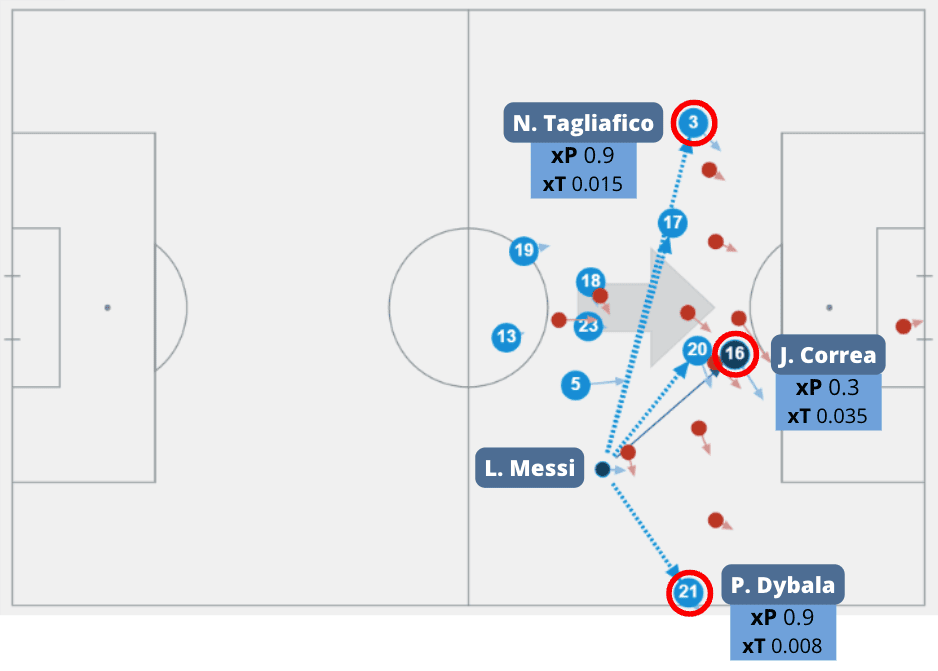
Conclusion
Our analysis demonstrates that Messi’s timing, vision, and skill combine perfectly to make him one of the most effective and threatening players in world football. Not only is he able to pass defenders with ease, using his close dribbling and low center of gravity, but he also creates acres of space for his teammates, then supplying them with the most accurate of passes. He is the perfect teammate, yet individually brilliant. He can pierce defenses on his own or orchestrate a team attack with ease. There have been many great players throughout the history of football, but he stands head and shoulders above the rest. He is the most complete player with every attribute one could wish for.

